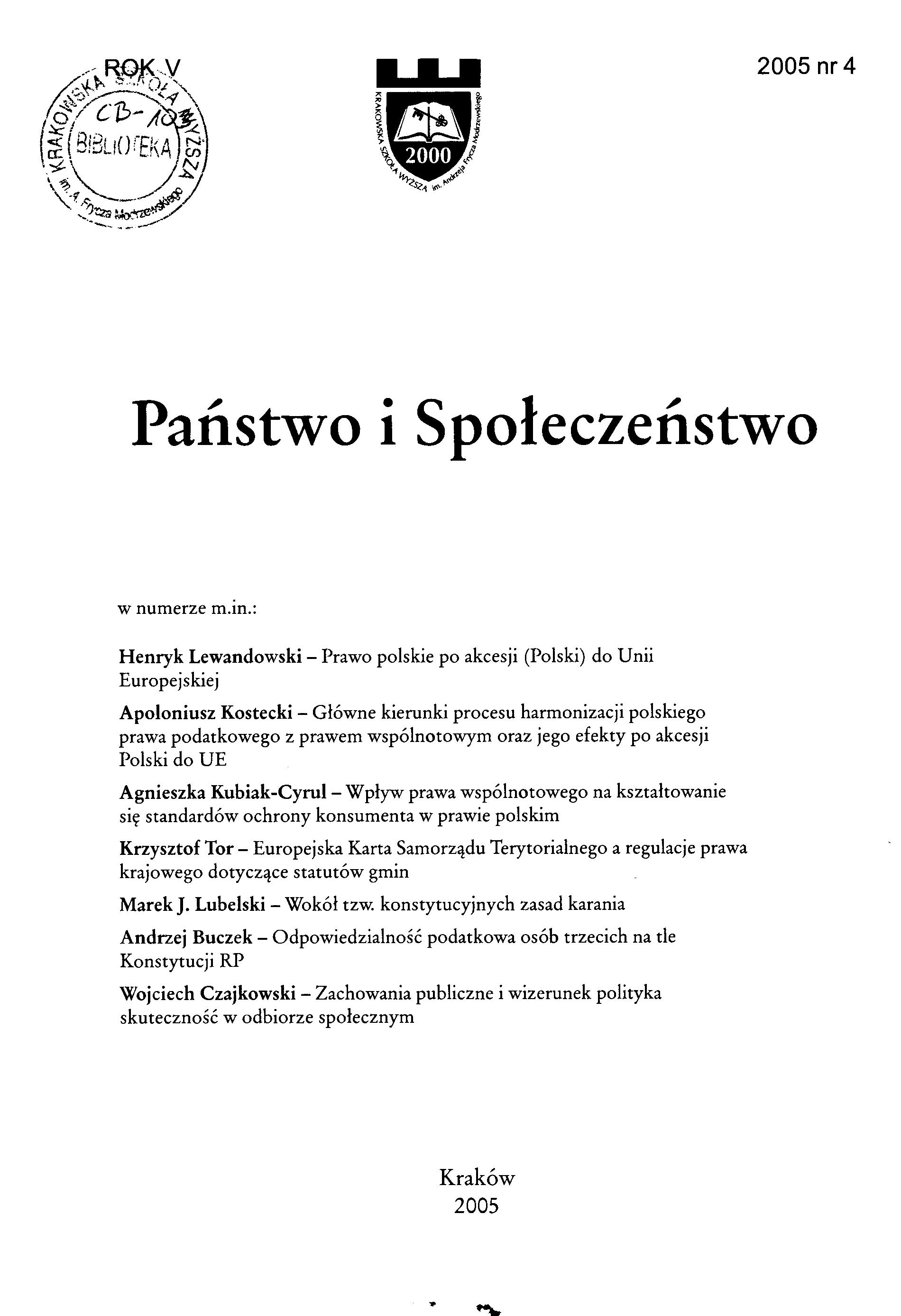
We kindly inform you that, as long as the subject affiliation of our 300.000+ articles is in progress, you might get unsufficient or no results on your third level or second level search. In this case, please broaden your search criteria.

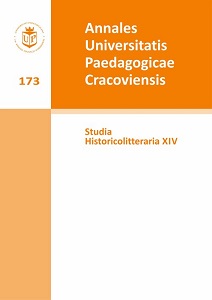
The author of the article makes an attempt to collocate and consequently show the similarities in the literary texts aimed at the young reader and the artistic projects connected with the area of the ghetto. The scholar notices that both literature and architecture use similar motives in spite of the fact that so diversified culture texts are directed to different age groups. Among common literary and architectural motives are: emptiness, cellar, limbo and confinement. All these are set in Martin Heidegger's philosophy oscillating around the symbolism of the flat, being rooted in tradition, lasting and creating.
More...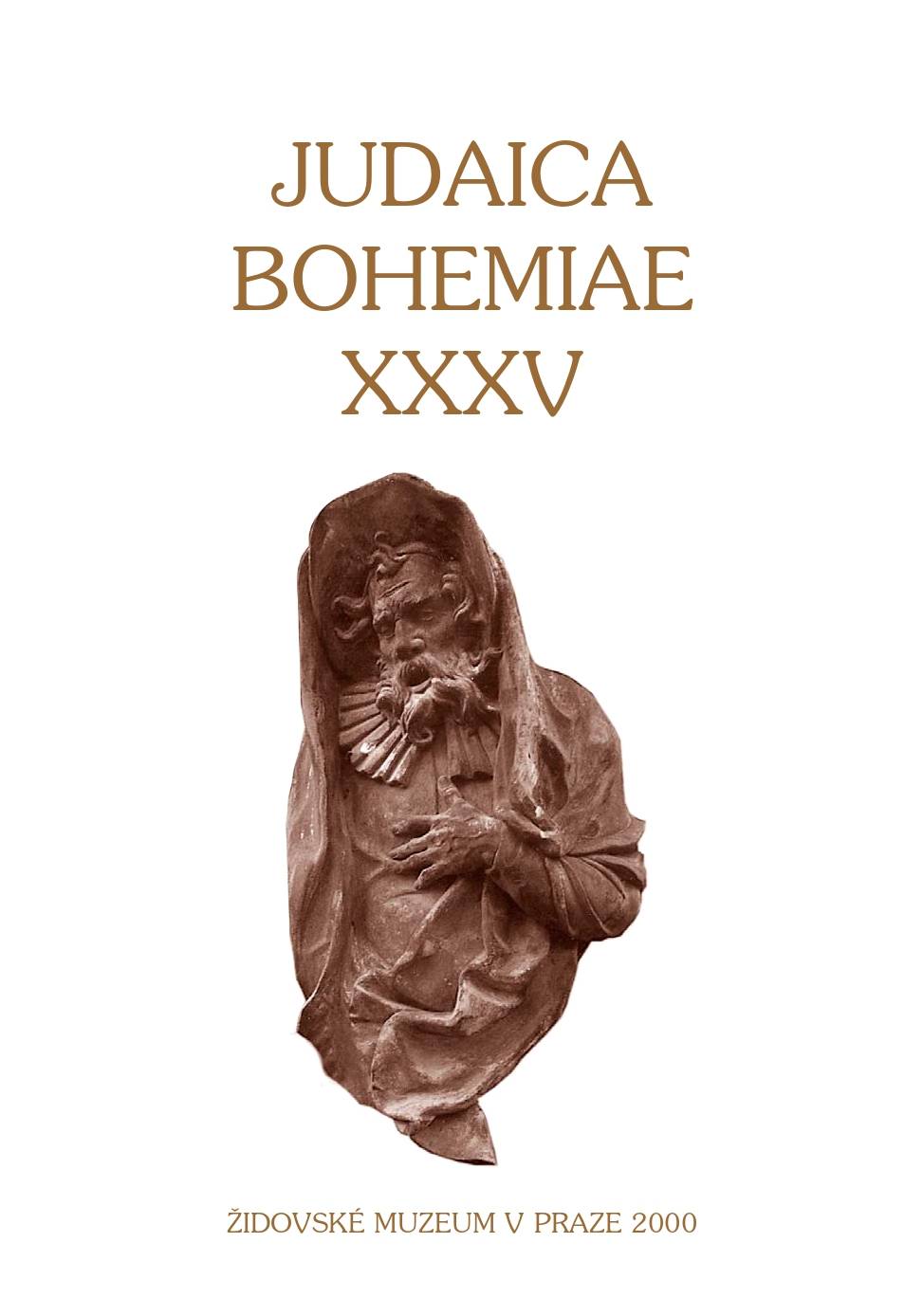
The Jewish Museum in Prague is actively collecting and recording the memories of Holocaust survivors, resistance members, and witnesses. The document lists annotated memoirs, detailing individuals' backgrounds, experiences during the war, and their subsequent journeys. These accounts include stories of emigration, internment, resistance activities, and survival against the odds.
More...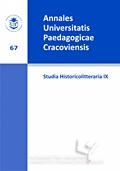
The article takes up the problem of critical reception of Michał Głowiński’s “Czarne sezony” as an autobiographical text which describes the experience of Extermination, taking into account readers’ attitudes, ethical obligations of a recipient of Holocaust literature, the employed research tools and reading models, but on the other hand, taking into account possible reactions of the readers to the author’s intentions and sender strategies, openly declared or inscribed in the text, which are possible to retrieve in the process of reading. Special attention is paid to the words of Henryk Grynberg, who is alone in his critical approach to Głowiński’s book, although many of his well-aimed remarks cannot be rejected. This issue is connected with the questions of what is the relation between a document and literature, where to fit the problem of appropriateness, truthfulness and authenticity of a message, or what are the consequences of selecting a particular text organization pattern, that is the narrative, stylistic and compositional solutions. Accepting the inefficiency of the opposition “document-literature” with reference to “Czarne sezony”, the author points to the limitations of the autotelic and metanarrative model of memories, chosen by Głowiński.
More...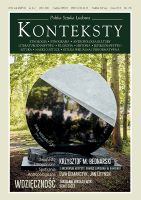
This text is dedicated to the Jewish cemetery in Gorlice – a sub-Carpathian town up to the Second World War inhabited by more than 3 000 Jews, male and female, i.e. slightly over 50 percent of the entire population. The cemetery contains only an ohel and several matzevahs, but it is difficult to decipher anything featured on them. Memory too is defunct in spite of the fact that thousands were buried here – the cemetery is already over 200 years old. Nonetheless, life goes on and that which once was human is now intertwined and becomes a unity with plants and, more extensively, with Nature. The cemetery is overgrown by old trees and shrubs; stones crumble and establish symbiosis with plants covering them; deer graze in high grass. Ewa Domańska wrote in Nekros: a cemetery is “a terrain of widely comprehended heritage, transgressing the ideas of culture and Nature, a chronological line of short time; a place where time unravels and assorted entangled histories, to use a term devised by quantum physicists, function, and where various chemical and physical processes turn into processes creating the sphere of the sacrum”. The author of the article is interested precisely in those “entangled histories” and crumbling space, which initiate a joint – botanicalanthropological – story about the Jews of Gorlice, their life and death, the traces they left behind, and the new form of existence whose part they are. “Woven into / eternal being – / you shall not elapse, / not elapse” – the poetess wrote?
More...
The article refers to Envy and Gratitude, the classical text by Melanie Klein, and a contemporary discussion within the range of psychoanalysis dealing with those psychological concepts. Psychological work on restoring gratitude is demonstrated by referring to the experiences of an Auschwitz Survivor. The author also discusses the current social discourse in which constructions of envy and gratitude play a significant part.
More...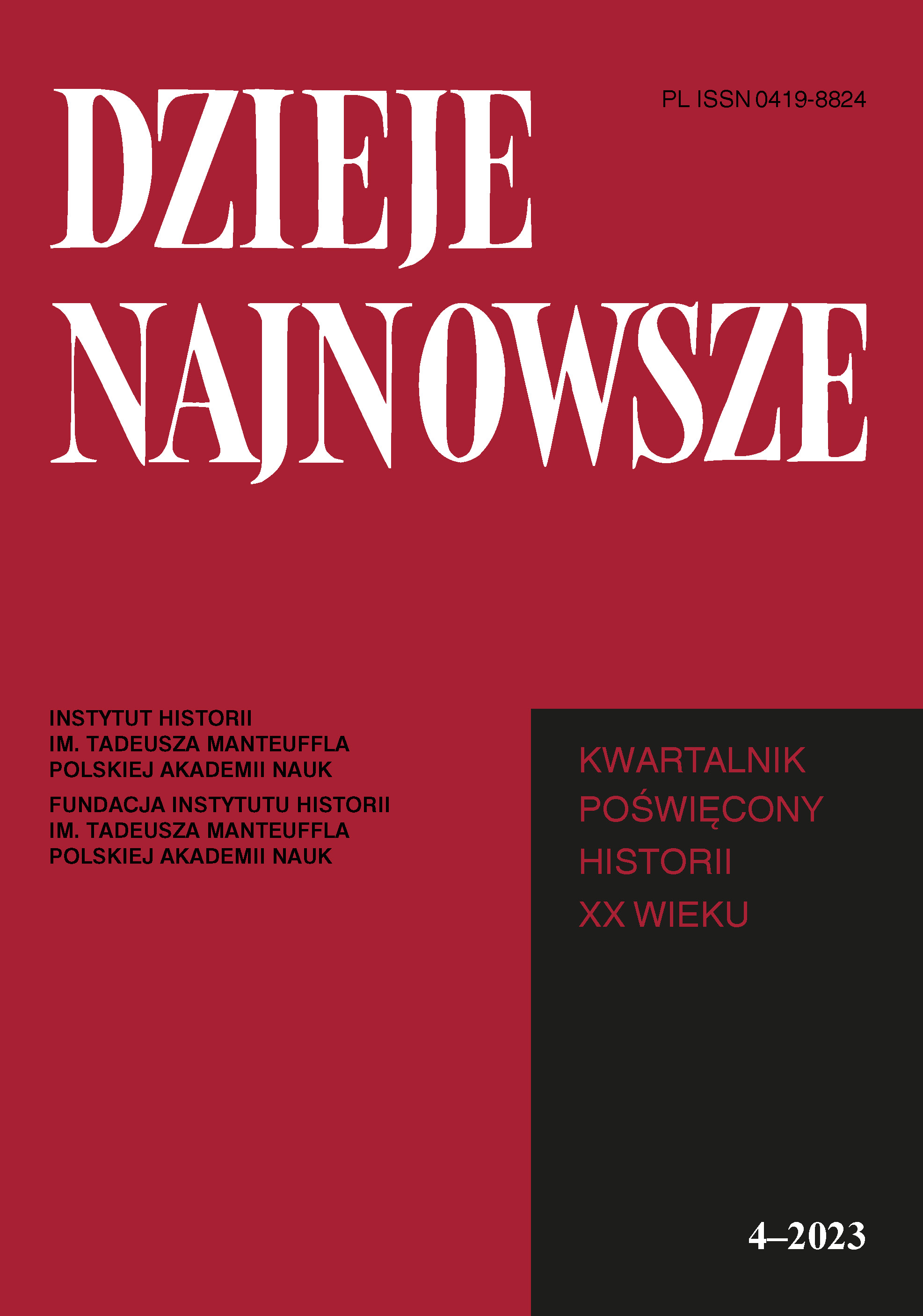
The article focuses on presenting the survival strategies of Jews who were used as forced labourers in the HASAG Munitions Factory in Skarżysko-Kamienna during the Second World War. The analysis presents both active (escape attempts, trade with Poles) and passive forms of coping with the camp reality (prayer, poetic creation). The text also considers the motivations of the Jewish workers, and attempts to answer the question of the effective- ness of the survival strategies they developed.
More...
Among the fifty leading thinkers analysing the Holocaust and genocide are two Poles of Jewish origin: the lawyer Rafał Lemkin and the sociologist Zygmunt Bauman. The article aims to characterise and compare two concepts of genocide, the circumstances in which they arose, and attempts to answer which concept better explains genocide understood as a historical phenomenon and a specific type of mass crime.
More...
The text edits and critically discusses previously unpublished correspondence conducted in 1943 between Rudolf Höss, commandant of the Nazi German concentration and extermination camp Auschwitz-Birkenau, and Fritz Bracht, a gauleiter of Upper Silesia. The camp, located in the Upper Silesian province, played an important role in Bracht’s local, national, and economic policies. For this reason, the gauleiter sought to maintain close cooperation and cordial contact with the camp authorities.
More...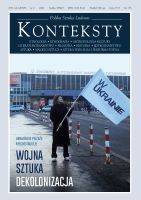
The massacre of civilians perpetrated by the Russians in Bucha is a point of departure for reflections dealing with textual and visual testimonies of collective violence, acts of genocide, and, predominantly, the Holocaust. The author ponders on selected examples of individual violence and extermination undertakings in assorted historical and political circumstances (from crimes committed against prisoners of war during the American Civil War, lynching, the Holocaust, the war in Syria, and Russian war crimes perpetrated in Ukraine). The differentiation of the historical-political context is accompanied by the diversity of communication media recording and transmitting borderline experiences involving victims: from written testimonies to Internet blogs and Facebook posts, from drawings and photographs published in the press to professional documentary films screened in courtrooms in the course of trials of criminals and in cinemas during special film projections, as well as private photographs and forms obtained with cell phones and put on the Internet. Alongside the variability of historical facts and the media there still remains the unchanging core of all those testimonies: first, the compelling need, an outright injunction, to create them; secondly – fundamental similarity, i.e. a foundation shared by all such testimonies: mortal fear, horror, dread, a feeling of being abandoned, and vulnerability. The author concentrated predominantly on the character of visual communication, the phenomenon of cruelty and violence photography as well as their impact upon the recipient.
More...
The martyrdom of the nation, including the crimes committed against the Polish population by Germans, Soviets or Ukrainians, occupies an important place in the historical policy promoted by the United Right camp. The actions of the authorities give the impression that they are trying to equate the fate of Jews and Poles during the war and, moreover, to erase from the collective memory the crimes committed against Jews by their Polish neighbours during the war. This is not a new procedure, also during the communist era shameful pages of Polish history were tried to be hidden. However, after 2015, the narrative promoted by the United Right on the attitudes of Poles towards the Holocaust goes further: not only are difficult matters kept silent, but attitudes testifying to the heroism and generosity of Poles in saving Jews are promoted in every way, in an attempt to convince public opinion at home and abroad that these attitudes were universal. To paraphrase a well-known poem by Czesław Miłosz and an essay by Jan Błoński, not - “Poor Poles look at the ghetto”, but - “Brave Poles save the ghetto”. The article is an attempt to comment on post-2015 historical politics in the context of Polish-Jewish relations during the German occupation on the basis of literature on the subject and media statements and reports.
More...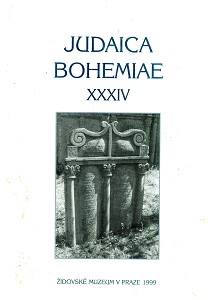
The document details the systematic collection of Holocaust survivor and witness memoirs by the Jewish Museum in Prague, presenting annotations of recorded memoirs. It includes accounts of individuals who experienced mixed marriages, hid from transportation, survived various concentration camps, and later resettled in different countries. The memoirs also cover those who participated in the resistance movement, were involved in cultural activities within the camps, and detail post-war emigration and life.
More...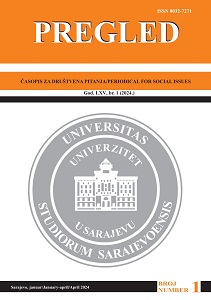
The Holocaust permanently changed the European continent, and its end and the passing of time bring with it the challenges of remembering and building a society based on different values from those that produced mass crimes and resulted in millions of murdered Jews, Roma, and other social groups that National Socialism recognized as undesirable. The challenge of memory is related primarily to its content, but also to the way it materializes in physical space. With its history, Villa Wannsee illustrates the complex relationship of German society to the legacy of the Holocaust and the long road to recognition of the extent of its damage. From the meeting place of Nazi officials for the administrative organization of the implementation of the Holocaust, through the youth center, to the memorial center, Villa Wannsee bears witness to the initial unwillingness of German society to face Nazi crimes and the gradual development of a culture of remembrance and social education about all the dangers of a state guided by the ideas of the supremacy of one group. whether racial, national or based on other discriminatory grounds.
More...
The article is an attempt to answer how Polish Redemptorists joined in saving Jews and their religious heritage in the era of the Holocaust. The study presented uses sources from both church and state archives along with available literature on the subject. The study discusses the involvement of individual communities and Redemptorist confreres who undertake the work of helping Jews in Warsaw, Tuchów, Mościska and Vilnius, as well as the particularly interesting and hitherto unknown in historiography case of the secret storage of the Torah from the synagogue in Dąbrowa Tarnowska by Redemptorists from community of Tuchów.
More...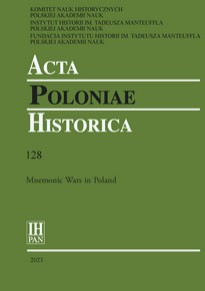
Review of: Hanna Węgrzynek - Space as a Category for the Research of History of Jews in Poland-Lithuania 1500–1900, ed. by Maria Cieśla and Ruth Leiserowitz, Wiesbaden, 2022, Harrassowitz Verlag, 155 pp., series: Deutsches Historisches Institut Warschau: Quellen und Studien, 40 Maria Cieśla - Moshe Rosman, Categorically Jewish, Distinctly Polish. Polish Jewish History Reflected and Refracted, London, 2022, Littman Library of Jewish Civilization and Liverpool University Press, 523 pp., series: Littman Library of Jewish Civilization Izabela Mrzygłód - Linda Erker, Die Universität Wien im Austrofaschismus. Österreichische Hochschulpolitik 1933 bis 1938, ihre Vorbedingungen und langfristigen Nachwirkungen, Göttingen, 2021, Vienna University Press bei V&R unipress, 326 pp., 40 ills; series: Schriften des Archivs der Universität Wien, 29 Katarzyna Anzorge - Yechiel Weizman, Unsettled Heritage. Living next to Poland’s Material Jewish Traces after the Holocaust, Ithaca and London, 2022, Cornell University Press, xiii + 289 pp Szymon Głąb - Luso-Tropicalism and Its Discontents. The Making and Unmaking of Racial Exceptionalism, ed. by Warwick Anderson, Ricardo Roque, and Ricardo Ventura Santos, New York–Oxford, 2019, Berghahn Books, 346 pp., 15 ills, index
More...
The article presents references to the events that took place in the Warsaw Ghetto between 19 April and 16 May 1943. The source basis consists of documents, political party platforms, accounts and personal testimonies, and above all the underground press from the time of the occupation and published in Poland after 1945 (with references to Polish-language Israeli newspapers ). The author reconstructs a fragment of the public discourse on the successive anniversaries of the outbreak of the Warsaw Ghetto Uprising and the rhetorical mechanisms for its implementation. Embedded in this discourse is the project of forming a collective awareness of the uprising, Jews and the Holocaust, as well as Polish-Jewish relations during the war. Between the outbreak of the ghetto uprising to 1989 – the symbolic end of the People’s Republic of Poland – particularly noteworthy are the year 1943, when patterns of expression are formed in the heat of the moment, the years 1943–1944, late 1967, early 1968, and 1983. In this first time frame, the underground press in occupied Poland was still free. Thus, different positions and tendencies are revealed in a free and unhindered manner. In “People’s Poland”, the press market had undergone a fundamental change of character. Except for a brief period of relative pluralism (the Jewish press ceased to exist in 1949), public discourse was monopolized and the space of public communication was taken over and nationalized. Therefore, the years 1945–1948 appear particularly interesting, as other interpretations of the uprising are still published apart from the official communist one. The monopoly of public expression about the uprising was broken in 1983, with articles, reports and interviews appearing in the independent underground press. Only two periods of crucial importance for the formation of public discourse on the anniversaries of the Warsaw Ghetto Uprising are discussed in the article. Between 1943 and 1944, the basic canons for speaking and writing about the fighting in the Jewish quarter are established, and the battle for the right of the presence of the word “uprising” itself in the communication space is played out. In 1968, the discourse on commemorating the uprising was given its canonical form. The author analyzes its components – what they are: insurrection; Polish aid; rivalry for martyrdom; common fate, common struggle, and common goal. A kind of epilogue to the presented review of forms of public discourse in connection with the anniversaries of the uprising is a description of the rhetoric used eighty years after its outbreak, in 2023.
More...
This paper reviews the life of Adolf Abraham Berman (1906–1978). It starts with his family of origin, his youth in Warsaw, his studies of psychology at the University of Warsaw, his early political activities and his marriage. A central section describes his life and activities during the Nazi occupation of Poland, first in the Warsaw Ghetto and later under assumed identity on the Aryan side. His leadership position of Polish Jews after the war is discussed, as well as his immigration to Israel in 1950 and his roles and activities during the last decades of his life.
More...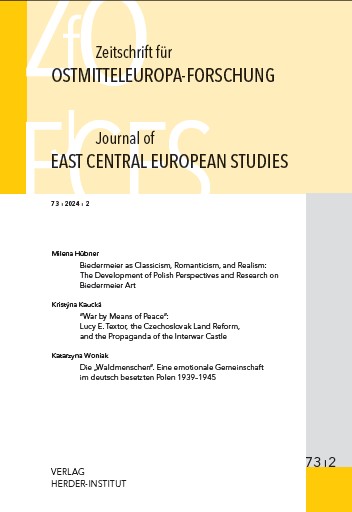
Review of Maria Ciesielska: The Doctors of the Warsaw Ghetto. Hrsg. von Jeanette Friedman, Tali Nates und Luc Albinski. Aus dem Polnischen von Agata Krzychylkiewicz. (The Holocaust: History and Literature, Ethics and Philosophy.) Academic Studies Press. Boston 2022. XXIV, 403 S., Ill. ISBN 978-1-64469-726-9. ($ 29,95.)
More...
Review of Filip Gańczak: Jan Sehn und die Ahndung der Verbrechen von Auschwitz. Eine Biografie. (Studien zur Geschichte und Wirkung des Holocaust, Bd. 7.) Wallstein Verlag. Göttingen 2022. 238 S., Ill. ISBN 978-3-8353-5321-3. (€ 25,–.)
More...
Review of Breaking the Frame. New School of Polish-Jewish Studies. Hrsg. von Irena Grudzińska Gross und Konrad Matyjaszek. Einleitung von Jan T . Gross. (Eastern European Culture, Politics and Societies, Bd. 19.) Peter Lang. Berlin 2022. 467 S., Ill. ISBN 978-3-631-84786-2. (€ 60,05.)
More...